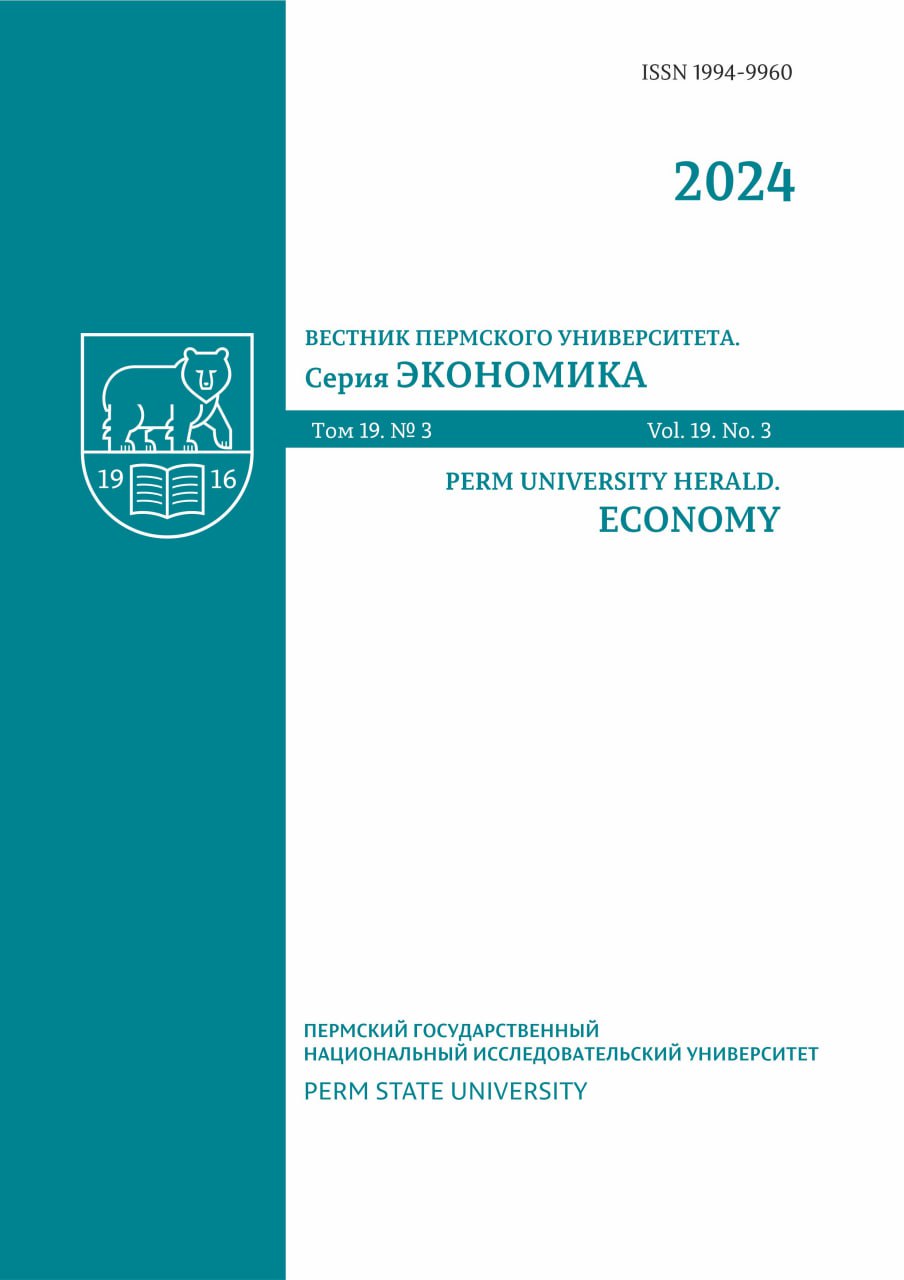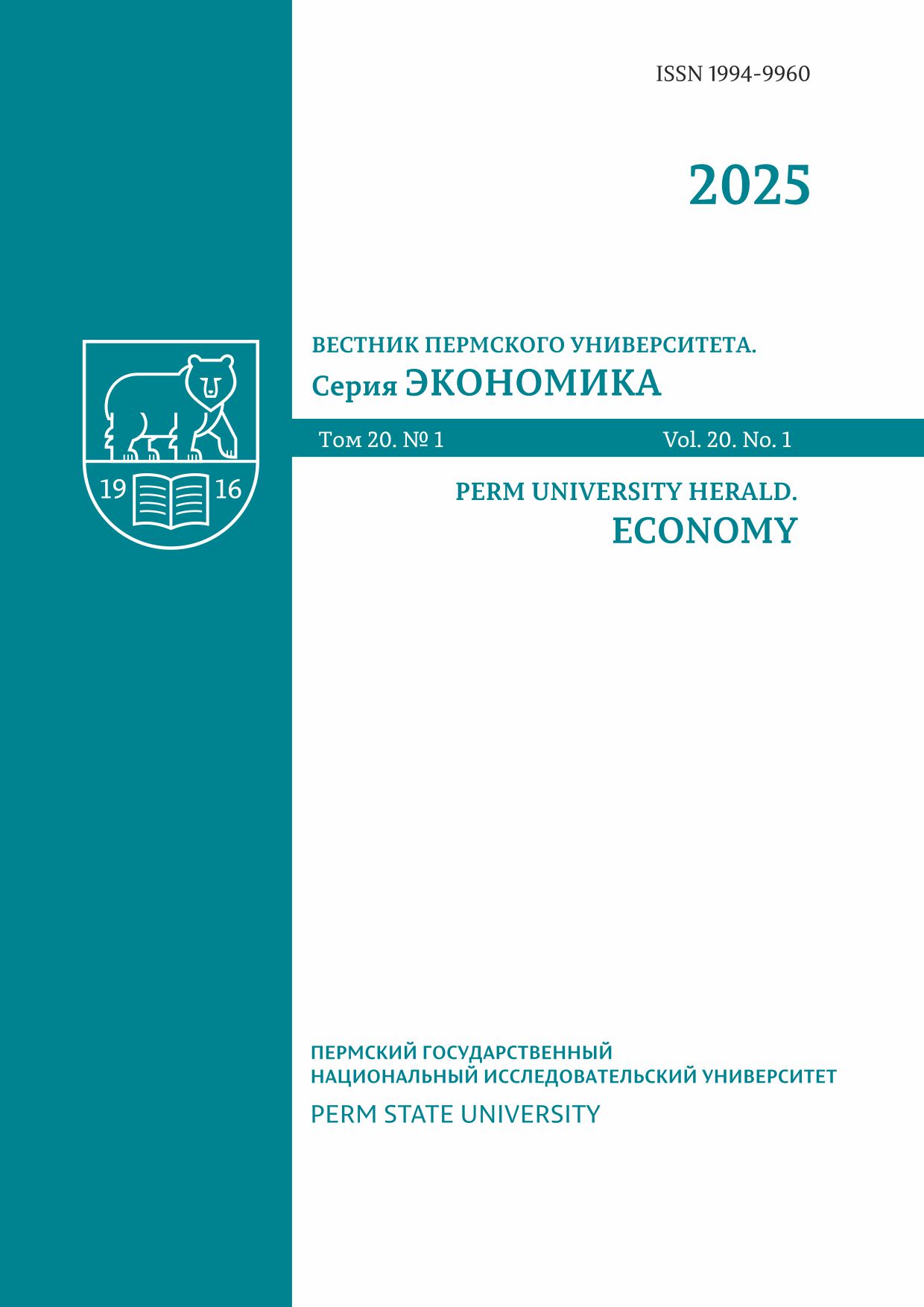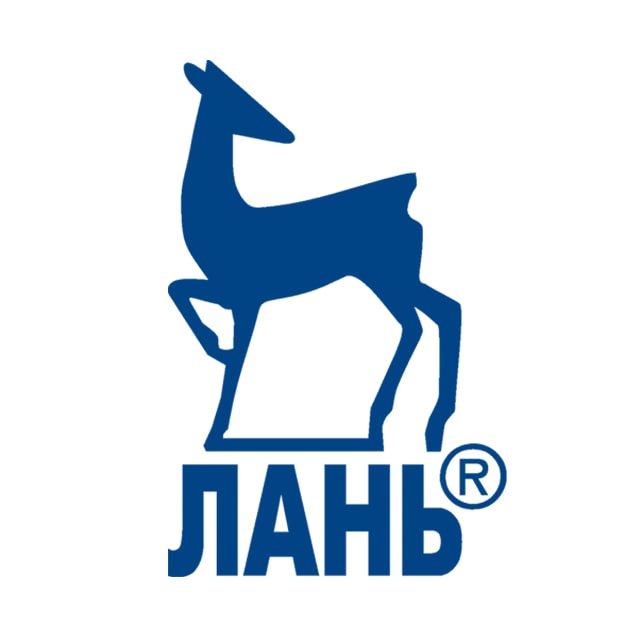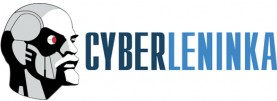The impact of information technologies and artificial intelligence on economic growth: An analysis of theoretical approaches
DOI:
https://doi.org/10.17072/1994-9960-2025-1-5-27Abstract
Introduction. This survey analyzes the impact of information technologies (IT) and artificial intelligence (AI) on economic growth. Despite the clear potential of new technologies, since the mid-2000s, the developed countries have been experiencing both a slowdown in their economic growth rates and a rise in their research and development expenditures. Additionally, market dynamism has been declining, which results in lower firm entry and exit rates, alongside a decrease in labour mobility. Purpose. The article aims at analyzing current studies that explore the lack of notable macroeconomic effects from IT and AI proliferation. Materials and Methods. The study includes critical analysis and discussion of academic literature focused on the macroeconomic effects of IT and AI. Results. A literature review revealed that current studies offer several reasons for no macroeconomic effects from IT and AI proliferation. Some studies suggest that the growth of market power and reduced dynamism are linked to diminishing opportunities for firms to catch up with the leaders due to IT and AI characteristics, such as slower knowledge diffusion and higher importance of intangible assets. Other potential reasons for the lack of IT and AI impacts on economic growth include: a) overly optimistic expectations regarding the productivity effects of IT and AI, b) inaccuracies in measuring the IT and AI effects, c) the use of new technologies for redistributing existing rents rather than creating new added value, and d) implementation and restructuring lags for additional investments and time to integrate general-purpose technologies like IT and AI. Conclusions. Findings from current theoretical models suggest that slowing market dynamism and increasing market power may be linked to IT diffusion. Therefore, the paper may be useful for researchers and economists interested in the factors of economic growth in the context of digital transformation. The conclusion explores potential AI applications to stimulate economic growth.
Keywords: information technology, artificial intelligence, economic growth, productivity, research and development, market power, general-purpose technologies, market dynamism
For citation
Martyanova E. V., Polbin A. V. The impact of information technologies and artificial intelligence on economic growth: An analysis of theoretical approaches. Perm University Herald. Economy, 2025, vol. 20, no. 1, pp. 5–27. DOI 10.17072/1994-9960-2025-1-5-27. EDN HRCAHA.
References
- Fernald J. G. Productivity and Potential Output before, during, and after the Great Recession. NBER Macroeconomics Annual, 2015, vol. 29, no. 1, pp. 1–51. DOI 10.1086/680580
- Adler G., Duval M. R. A., Furceri D., Celik S. K., Koloskova K., Poplawski-Ribeiro M. Gone with the Headwinds: Global Productivity. Washington, DC, International Monetary Fund, 2017. 98 p. DOI 10.5089/9781475589672.006
- Cette G., Fernald J., Mojon B. The pre-Great Recession slowdown in productivity. European Economic Review, 2016, vol. 88, no. 3-20, pp. 3–20. DOI 10.1016/j.euroecorev.2016.03.012
- Brynjolfsson E., Rock D., Syverson C. Artificial intelligence and the modern productivity paradox. The Economics of Artificial Intelligence: An Agenda. Chicago, University of Chicago Press, 2019, pp. 23–57. DOI 10.7208/chicago/9780226613475.003.0001
- Acemoglu D. The Simple Macroeconomics of AI. NBER Working Paper No. 32487. Cambridge, MA, NBER, 2024. 58 p. DOI 10.3386/w32487
- Cardarelli M. R., Lusinyan M. L. US Total Factor Productivity Slowdown: Evidence from the US States. Washington, D.C., International Monetary Fund, 2015. 24 p. DOI 10.5089/9781513520834.001
- Byrne D. M., Fernald J. G., Reinsdorf M. B. Does the United States have a productivity slowdown or a measurement problem? Brookings Papers on Economic Activity, 2016, no. 1, pp. 109–182. DOI 10.1353/eca.2016.0014
- Syverson C. Challenges to mismeasurement explanations for the US productivity slowdown. Journal of Economic Perspectives, 2017, vol. 31, no. 2, pp. 165–186. DOI 10.1257/jep.31.2.165
- Andrews D., Criscuolo C., Gal P. The best versus the rest: The global productivity slowdown, divergence across firms and the role of public policy. OECD Productivity Working Papers. No. 5. Paris, OECD Publishing, 2016. 77 p. DOI 10.1787/63629cc9-en
- Brynjolfsson E., McAfee A., Sorell M., Zhu F. Scale without mass: Business process replication and industry dynamics. Harvard Business School Technology & Operations Mgt. Unit Research Paper No. 07-016. SSRN, 2008. 47 p. DOI 10.2139/ssrn.980568
- Autor D., Dorn D., Katz L. F., Patterson C., Reenen J. V. The fall of the labor share and the rise of superstar firms. The Quarterly Journal of Economics, 2020, vol. 135, no. 2, pp. 645–709. DOI 10.1093/qje/qjaa004
- Bresnahan T. F., Trajtenberg M. General purpose technologies ‘Engines of growth’? Journal of Econometrics, 1995, vol. 65, no. 1, pp. 83–108. DOI 10.1016/0304-4076(94)01598-T
- David P. A. The dynamo and the computer: An historical perspective on the modern productivity paradox. The American Economic Review, 1990, vol. 80, no. 2, pp. 355–361. Available at: https://www.jstor.org/stable/2006600 (access date 07.02.2025).
- Lucas R. E. On the mechanics of economic development. Journal of Monetary Economics, 1988, vol. 22, no. 1, pp. 3–42. DOI 10.1016/0304-3932(88)90168-7
- Romer P. M. Increasing returns and long-run growth. Journal of Political Economy, 1986, vol. 94, no. 5, pp. 1002–1037. DOI 10.1086/261420
- Romer P. M. Endogenous technological change. Journal of Political Economy, 1990, vol. 98, no. 5, pp. 71–102. DOI 10.1086/261725
- Aghion P., Howitt P. A Model of growth through creative destruction. Econometrica, 1992, vol. 60, no. 2, pp. 323–351. DOI 10.2307/2951599
- Grossman G. M., Helpman E. Quality ladders in the theory of growth. Review of Economic Studies, 1991, vol. 58, no. 1, pp. 43–61. DOI 10.2307/2298044
- Zamulin О.A., Sonin К.I. Economic growth: Nobel prize in economic sciences 2018 and the lessons for Russia. Voprosy ekonomiki, 2019, no. 1, pp. 11–36. (In Russ.). DOI 10.32609/0042-8736-2019-1-11-36. EDN YTNWLB
- Aghion P., Akcigit U., Howitt P. What do we learn from Schumpeterian growth theory? Handbook of Economic Growth, 2014, vol. 2, pp. 515–563. DOI 10.1016/B978-0-444-53540-5.00001-X
- Arrow K. Economic welfare and the allocation of resources for invention. The Rate and Direction of Inventive Activity: Economic and Social Factors / Ed. by Universities-National Bureau Committee for Economic Research, Committee on Economic Growth of the Social Science Research Council. Princeton, Princeton University Press, 1962, pp. 609–626. DOI 10.1007/978-1-349-15486-9_13
- Aghion P., Harris C., Vickers J. Competition and growth with step-by-step innovation: An example. European Economic Review, 1997, vol. 41, no. 3-5, pp. 771–782. DOI 10.1016/S0014-2921(97)00036-6
- Klette T. J., Kortum S. Innovating firms and aggregate innovation. Journal of Political Economy, 2004, vol. 112, no. 5, pp. 986–1018. DOI 10.1086/422563
- Helpman E., Trajtenberg M. A Time to Sow and a Time to Reap: Growth Based on General Purpose Technologies. Cambridge, MA, NBER, 1994. 48 p. DOI 10.3386/w4854
- Brynjolfsson E., Rock D., Syverson C. The productivity J-Curve: How intangibles complement general purpose technologies. American Economic Journal: Macroeconomics, 2021, vol. 13, no. 1, pp. 333–372. DOI 10.1257/mac.20180386
- Pugsley B. W., Şahin A. Grown-up business cycles. The Review of Financial Studies, 2019, vol. 32, no. 3, pp. 1102–1147. DOI 10.1093/rfs/hhy063
- Decker R. A., Haltiwanger J., Jarmin R. S., Miranda J. Changing business dynamism and productivity: Shocks versus responsiveness. American Economic Review, 2020, vol. 110, no. 12, pp. 3952–3990. DOI 10.1257/aer.20190680
- Karahan F., Pugsley B., Şahin A. Demographic origins of the start-up deficit. American Economic Review, 2024, vol. 114, no. 7, pp. 1986–2023. DOI 10.1257/aer.20210362
- Hopenhayn H., Neira J., Singhania R. Implications for concentration, entrepreneurship and the labor share. Econometrica, 2022, vol. 90, no. 4, pp. 1879–1914. DOI 10.3982/ECTA18012
- De Loecker J., Eeckhout J., Unger G. The rise of market power and the macroeconomic implications. The Quarterly Journal of Economics, 2020, vol. 135, no. 2, pp. 561–644. DOI 10.1093/qje/qjz041
- Díez F. J., Fan J., Villegas-Sánchez C. Global declining competition? Journal of International Economics, 2021, vol. 132, Article 103492. DOI 10.1016/j.jinteco.2021.103492
- Olmstead-Rumsey J. Market Concentration and the Productivity Slowdown. MPRA Paper No. 107000. December 13, 2020. 71 p. [Revised version].
- Kogan L., Papanikolaou D., Seru A., Stoffman N. Technological innovation, resource allocation, and growth. The Quarterly Journal of Economics, 2017, vol. 132, no. 12, pp. 665–712. DOI 10.1093/qje/qjw040
- Aghion P., Harris C., Howitt P., Vickers J. Competition, imitation and growth with step-by-step innovation. The Review of Economic Studies, 2001, vol. 68, no. 3, pp. 467–492. DOI 10.1111/1467-937X.00177
- Aghion P., Bergeaud A., Boppart T., Klenow P. J., Li H. A theory of falling growth and rising rents. Review of Economic Studies, 2023, vol. 90, no. 6, pp. 2675–2702. DOI 10.1093/restud/rdad016
- Crouzet N., Eberly J. C. Understanding Weak Capital Investment: The Role of Market Concentration and Intangibles. NBER Working Paper No. 25869. Cambridge, MA, NBER, 2019. 65 p. DOI 10.3386/w25869
- Bessen J., Impink S. M., Reichensperger L., Seamans R. The role of data for AI startup growth. Research Policy, 2022, vol. 51, no. 5, Article 104513. DOI 10.1016/j.respol.2022.104513
- Akcigit U., Ates S. Ten facts on declining business dynamism and lessons from endogenous growth theory. American Economic Journal: Macroeconomics, 2021, vol. 13, no. 1, pp. 257–298. DOI 10.1257/mac.20180449
- Akcigit U., Ates S. T. What happened to US business dynamism? Journal of Political Economy, 2023, vol. 131, no. 8, pp. 2059–2124. DOI 10.1086/724289
- De Ridder M. Market power and innovation in the intangible economy. American Economic Review, 2024, vol. 114, no. 1, pp. 199–251. DOI 10.1257/aer.20201079
- Bloom N., Sadun R., Van Reenen J. Americans do IT better: US multinationals and the productivity miracle. American Economic Review, 2012, vol. 102, no. 1, pp. 167–201. DOI 10.1257/aer.102.1.167
- Schivardi F., Schmitz T. The IT revolution and Southern Europe’s two lost decades. Journal of the European Economic Association, 2020, vol. 18, no. 5, pp. 2441–2486. DOI 10.1093/jeea/jvz048
- Stevenson B. Artificial intelligence, income, employment, and meaning. The Economics of Artificial Intelligence: An Agenda / Ed. by A. Agrawal, J. Gans, A. Goldfarb. Chicago, University of Chicago Press, 2018, pp. 189–196. DOI 10.7208/chicago/9780226613475.003.0007
- Eisfeldt A. L., Schubert G., Zhang M. B. Generative AI and Firm Values. NBER Working Paper No. 31222. Cambridge, MA, NBER, 2023. 69 p. DOI 10.3386/w31222
- Czarnitzki D., Fernández G. P., Rammer C. Artificial intelligence and firm-level productivity. Journal of Economic Behavior & Organization, 2023, vol. 211, pp. 188–205. DOI 10.1016/j.jebo.2023.05.008
- Dell'Acqua F., McFowland III E., Mollick E. R., Lifshitz-Assaf H., Kellogg K., Rajendran S., Krayer L., Candelon F., Lakhani K. R. Navigating the jagged technological frontier: Field experimental evidence of the effects of AI on knowledge worker productivity and quality. Harvard Business School Technology & Operations Mgt. Unit Working Paper No. 24-013. SSRN, 2023. 58 p. DOI 10.2139/ssrn.4573321
- Brynjolfsson E., Li D., Raymond L. R. Generative AI at Work. NBER Working Paper No. 31161. Cambridge, MA, NBER, 2023. 67 p. DOI 10.3386/w31161
- Korinek A. Language Models and Cognitive Automation for Economic Research. NBER Working Paper No. 30957. Cambridge, MA, NBER, 2023. 35 p. DOI 10.3386/w30957
- Rammer C., Fernández G. P., Czarnitzki D. Artificial intelligence and industrial innovation: Evidence from German firm-level data. Research Policy, 2022, vol. 51, no. 7, Article 104555. DOI 10.1016/j.respol.2022.104555
- Babina T., Fedyk A., He A., Hodson J. Artificial intelligence, firm growth, and product innovation. Journal of Financial Economics, 2024, vol. 151, Article 103745. DOI 10.1016/j.jfineco.2023.103745
- Weitzman M. L. Recombinant growth. The Quarterly Journal of Economics, 1998, vol. 113, no. 2, pp. 331–360. DOI 10.1162/003355398555595
- Bloom N., Jones C. I., Van Reenen J., Webb M. Are ideas getting harder to find? American Economic Review, 2020, vol. 110, no. 4, pp. 1104–1144. DOI 10.1257/aer.20180338











